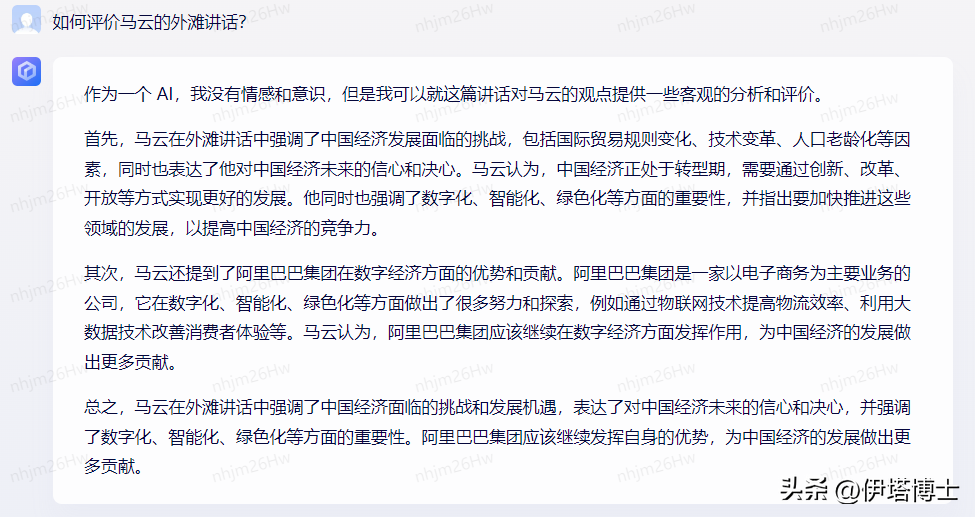Spring 注解@Bean使用方式你都知道吗?
环境:Spring5.3.25
@Bean是方法级注释,是XML <bean/>元素的直接类比。注解支持<bean/>提供的一些属性,例如:
init-methoddestroy-methodautowiringname.
你可以在@Configuration或@Component类中使用@Bean注释。
要声明bean,可以使用@Bean注释对方法进行注释。可以使用此方法在ApplicationContext中注册bean定义,其类型指定为该方法的返回值。默认情况下,bean名与方法名相同。下面的例子展示了一个@Bean方法声明:
@Configuration
public class AppConfig {
@Bean
public TransferServiceImpl transferService() {
return new TransferServiceImpl();
}
}
前面的配置与下面的Spring XML完全等效:
<beans>
<bean id="transferService" class="com.acme.TransferServiceImpl"/>
</beans>
这两个声明都使一个名为transferService的bean在ApplicationContext中可用,绑定到类型为TransferServiceImpl的对象实例,如下图所示:
transferService -> com.acme.TransferServiceImpl
你也可以使用默认方法来定义bean。这允许通过在默认方法上实现带有bean定义的接口来组合bean配置。
public interface BaseConfig {
@Bean
default TransferServiceImpl transferService() {
return new TransferServiceImpl();
}
}
@Configuration
public class AppConfig implements BaseConfig {
}
你还可以用接口(或基类)返回类型声明@Bean方法,如下例所示:
@Configuration
public class AppConfig {
@Bean
public TransferService transferService() {
return new TransferServiceImpl();
}
}
然而,这将高级类型预测的可见性限制为指定的接口类型(TransferService)。然后,只有在实例化了受影响的单例bean之后,容器才知道完整类型(TransferServiceImpl)。非惰性单例bean根据其声明顺序进行实例化,因此你可能会看到不同的类型匹配结果,这取决于另一个组件何时尝试通过非声明类型进行匹配(例如@Autowired TransferServiceImpl,它只在transferServicebean实例化后才解析)。
一个@Bean注释的方法可以有任意数量的参数来描述构建该Bean所需的依赖关系。例如,如果我们的TransferService需要一个AccountRepository,我们可以用一个方法参数来实现该依赖关系,如下例所示:
@Configuration
public class AppConfig {
@Bean
public TransferService transferService(AccountRepository accountRepository) {
return new TransferServiceImpl(accountRepository);
}
}
解析机制与基于构造函数的依赖注入非常相似。
使用@Bean注释定义的任何类都支持常规的生命周期回调,并且可以使用JSR-250中的@PostConstruct和@PreDestroy注释。
也完全支持常规的Spring生命周期回调。如果bean实现InitializingBean、DisposableBean或Lifecycle,那么容器将调用它们各自的方法。
还完全支持一组标准的*Aware接口(如BeanFactoryAware、BeanNameAware、MessageSourceAware、ApplicationContextAware等)。
@Bean注释支持指定任意的初始化和销毁回调方法,就像Spring XML在Bean元素上的init方法和destroy方法属性一样,如下例所示:
public class BeanOne {
public void init() {
// initialization logic
}
}
public class BeanTwo {
public void cleanup() {
// destruction logic
}
}
@Configuration
public class AppConfig {
@Bean(initMethod = "init")
public BeanOne beanOne() {
return new BeanOne();
}
@Bean(destroyMethod = "cleanup")
public BeanTwo beanTwo() {
return new BeanTwo();
}
}
默认情况下,使用Java配置定义的具有公共close或shutdown方法的bean会自动使用销毁回调进行登记。如果你有一个公共的close或shutdown方法,并且不希望在容器关闭时调用它,那么可以将@Bean(destroyMethod="")添加到Bean定义中,以禁用默认(推断)模式。
public class Main {
static class Person {
public void close() {
System.out.println("close") ;
}
public void shutdown() {
System.out.println("shutdown") ;
}
}
@Configuration
static class AppConfig {
@Bean
// @Bean(destroyMethod = "") 这样就禁用了关闭的操作(close和shutdown)
public Person person() {
return new Person() ;
}
}
public static void main(String[] args) {
AnnotationConfigApplicationContext context = new AnnotationConfigApplicationContext(AppConfig.class) ;
context.close() ;
}
}
注意:如果一个类中既有close方法又有shutdown方法,那么只有close方法生效。
以前面示例中的BeanOne为例,在构造过程中直接调用init()方法同样有效,如下面的例子所示:
@Configuration
public class AppConfig {
@Bean
public BeanOne beanOne() {
BeanOne beanOne = new BeanOne();
beanOne.init();
return beanOne;
}
}
当你直接在Java中工作时,你可以对对象执行任何你喜欢的操作,而不必总是依赖于容器生命周期。
Spring包含@Scope注释,以便您可以指定bean的范围。
你可以指定使用@Bean注释定义的Bean应该具有特定的作用域。可以使用Bean scopes部分中指定的任何标准作用域。
默认作用域是singleton,但您可以使用@Scope注释来覆盖它,如下例所示:
@Configuration
public class MyConfiguration {
@Bean
@Scope("prototype")
public Encryptor encryptor() {
// ...
}
}
@Scope and scoped-proxy
Spring通过作用域代理提供了一种方便的方式来处理作用域依赖。在使用XML配置时,创建这样一个代理的最简单方法是<aop:scope -proxy/>元素。在Java中配置bean时,使用@Scope注解可以为proxyMode属性提供类似的支持。默认值是ScopedProxyMode.DEFAULT,它通常表示不应该创建scoped proxy,除非在组件扫描指令级别配置了不同的DEFAULT。你可以指定ScopedProxyMode.TARGET_CLASS ScopedProxyMode。接口或ScopedProxyMode.NO。
如果你使用Java将XML参考文档(参见“限定范围的代理”)中的限定范围代理示例移植到我们的@Bean,它类似于以下内容:
// an HTTP Session-scoped bean exposed as a proxy
@Bean
@SessionScope
public UserPreferences userPreferences() {
return new UserPreferences();
}
@Bean
public Service userService() {
UserService service = new SimpleUserService();
// a reference to the proxied userPreferences bean
service.setUserPreferences(userPreferences());
return service;
}
默认情况下,配置类使用@Bean方法的名称作为生成的Bean的名称。但是,可以使用name属性覆盖此功能,如以下示例所示:
@Configuration
public class AppConfig {
@Bean("myThing")
public Thing thing() {
return new Thing();
}
}
正如Naming Beans中所讨论的,有时需要为单个bean提供多个名称,也称为bean别名。@Bean注释的name属性接受用于此目的的String数组。以下示例显示了如何为bean设置多个别名:
@Configuration
public class AppConfig {
@Bean({"dataSource", "subsystemA-dataSource", "subsystemB-dataSource"})
public DataSource dataSource() {
// instantiate, configure and return DataSource bean...
}
}
有时,提供一个bean的更详细的文本描述是有帮助的。当bean被公开(可能是通过JMX)用于监视目的时,这可能特别有用。
要向@Bean添加描述,可以使用@Description注释,如下例所示:
@Configuration
public class AppConfig {
@Bean
@Description("Provides a basic example of a bean")
public Thing thing() {
return new Thing();
}
}
完毕!!!
求关注
SpringBoot对Spring MVC都做了哪些事?(一)
SpringBoot对Spring MVC都做了哪些事?(二)
SpringBoot对Spring MVC都做了哪些事?(三)
SpringBoot对Spring MVC都做了哪些事?(四)
Spring Retry重试框架的应用
spring data jpa 高级应用


“超级地球” 要大10多倍 有第二个家?(星球环境)
科学家在距离地球41光年外发现了超级地球,或许能够成为人类的第二个家园。科学家在探索宇宙时发现了一颗超大的地球,如果环境适宜的情况下,能够很好的解决人类的生存危机,成为第二颗替代的星球。地球现状我要新鲜事2023-05-16 10:49:350000性格类型什么意思?揭秘四种性格类型及特点
导语:性格类型指的是在一类人身上都有的一种性格的综合反映,因为性格问题是比较复杂的,所以目前没有完全一致的说法,但是大致可以分为主要的四种性格类型,分别是现实型,传统型,社会型和艺术型,下面和探秘志看看性格类型什么意思。性格类型什么意思?我要新鲜事2023-05-09 07:21:360000文心一言如何看马云的外滩讲话?
百度的文心一言如何看马云当年著名的外滩讲话呢?作为一个AI,我没有情感和意识,但是我可以就这篇讲话对马云的观点提供一些客观的分析和评价。我要新鲜事2023-05-14 00:30:490000木星将会成为人类极力关注的对象!
太阳系有8大行星,大家之间的个头差距都非常的大,尤其是木星,他是太阳系中最大的行星,而且他还有一颗想要取代太阳的心。在太阳系有许多的奇葩天体,例如土星虽然特别大但是密度小可以玩水上漂,或者遥远的海王星上的冰可以比铁还硬。木星则最为不一般,他可以自己发光,自己产生热量。我要新鲜事2023-05-07 16:51:490000太空并不太平,美国卫星两次接近中国空间站,它们想干嘛?
12月初,中国在联合国大会上提交了一份文件,内容是美国太空探索技术公司(SpaceX)发射的卫星星链,曾在今年7月和10月两次故意接近中国空间站,威胁到了我国空间站和航天员们的安全。为了避免意外发生,我国空间站耗费燃料实施了紧急避险措施。我要新鲜事2023-11-21 12:09:130000






